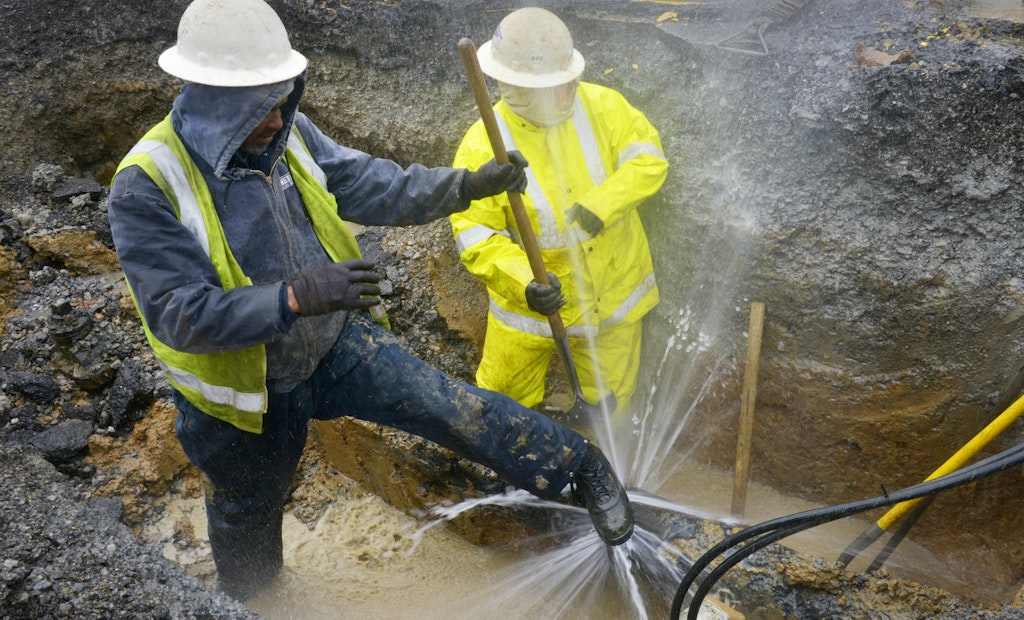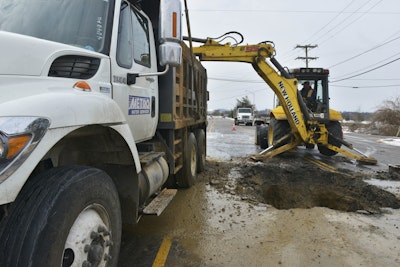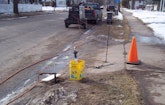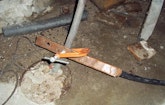
Interested in Rehab/Relining?
Get Rehab/Relining articles, news and videos right in your inbox! Sign up now.
Rehab/Relining + Get AlertsWhen temperatures plunge below zero each winter, the City of Rhinelander (Wisconsin) Public Works Department is prepared. Officials know calls are coming from customers to help with frozen pipes and that the city’s own water and sewer lines may also need to be thawed out.
“We try to be proactive,” says Tim Kingman, Rhinelander’s director of public works. “Every day is an adventure here.”
Unthawing methods
When lines freeze, the typical thawing method is connecting a welder to the frozen pipe and adjacent service or fire hydrant, then running a current through the pipe. The average thaw time is two to three hours. If it’s a nonmetallic pipe or a pipe where continuity has been lost, hot water or steam is used in the thawing process, which takes longer than the other method. Kingman says the city has electricians on hand during the thawing process to minimize risk.
Last winter, the city thawed out more than 500 Rhinelander customers. This winter hasn’t been as bad — only 150 have been thawed out as of March 1 — but the city did have one 24-inch sewer line freeze. Frost depths in the city were about 4 feet in early February, which meant it was the prime season for pipes to freeze up, Kingman says.
The first time the City of Rhinelander unthaws a private customer, there is no charge. But if Kingman’s crews need to return and it’s apparent the homeowners didn’t follow the suggestion to keep a stream of water running to keep the line open, the city charges a fee. If crews come out during the regular business hours of 7 a.m. to 3 p.m. during the week, customers are charged a $300 flat fee, and if workers are called out in the evenings or on the weekend, the fee is $400.
Nashville, Tennessee, also only takes care of the pipes that lead from the mainlines up to a property’s water meter, says Sonia Allman, public information officer for Nashville Metro Water. If property owners have pipes in their homes freeze, they need to call a private plumber to thaw them out. Allman says it would be too costly for the utility — which is funded by the revenue it generates from service to customers — to help.
Education = Prevention
“We provide plenty of education to customers every year about what to do to make sure their pipes don’t freeze,” Allman says. “We tell them about keeping a faucet running, wrapping exposed pipes with insulating material or heat tape.”
Rhinelander also urges freeze-prone customers to take precaution. Kingman says they look back at the histories and ecourage those customers to keep a pencil-wide stream of water running throughout the winter. Last winter, all customers were advised to keep their water running for a designated period of time. The city doesn’t charge users for the extra usage, although Kingman says an across-the-board price increase is coming this year.
A reoccurring problem
For Nashville, this past winter was a bit unique, with the utility having 74 main breaks in January and 98 in February. That compares to 168 breaks in January 2014 and 55 in February.
“Last winter was terribly cold, but we did have several very cold days in February that led to those higher numbers,” Allman says. “We can’t do anything to prevent main breaks, but we can be prepared and have our trucks ready to go out when something goes wrong.”
Nashville has 3,000 miles of underground mains and 64 percent are more than 40 years old, she says.
“They’re brittle, and when you get the ground thawing and shifting, that’s hard on them," Allman says. "There’s often several reasons why mains break. Also, our main water supply is the Cumberland River, and when that water temperature goes below 40 degrees it is hard on those brittle pipes. We definitely notice an increase in problems.”
Being prepared for emergency calls when temperatures drop is important, but the cost can be high.
“We have some upgrades coming, but if that wasn’t the case, we would have to look at price increases. Having our customers keep their water running costs us a half million dollars,” Kingman says. “It’s a complicated issue and each community has to make its own decisions on how to handle the situation."








